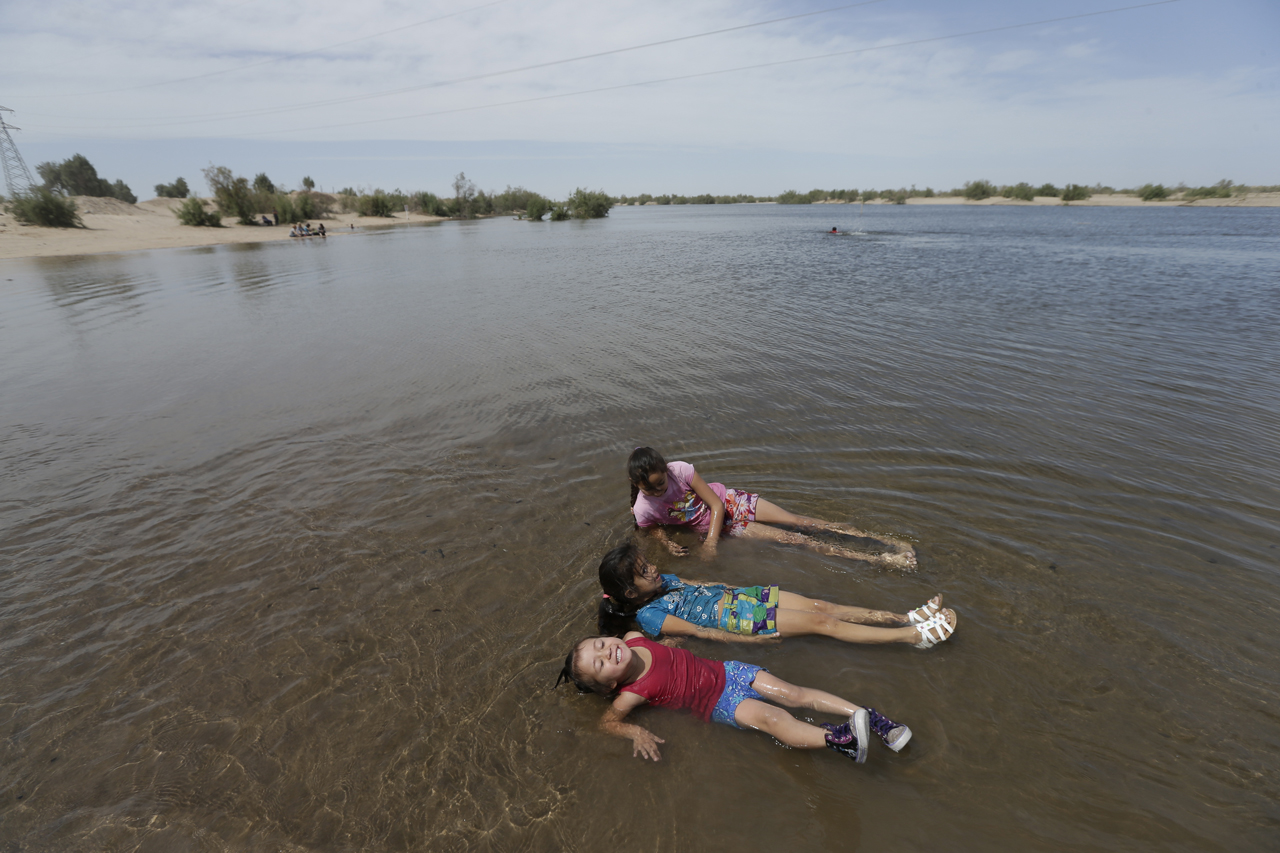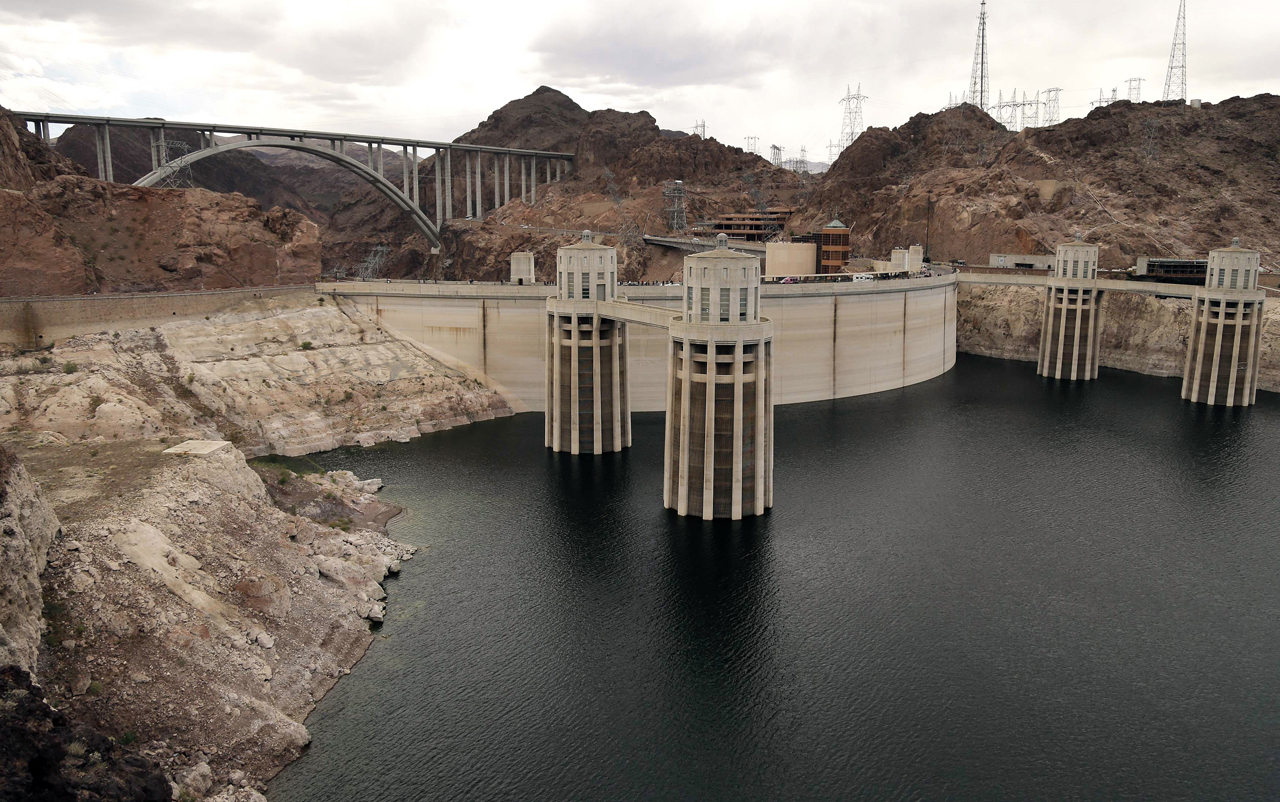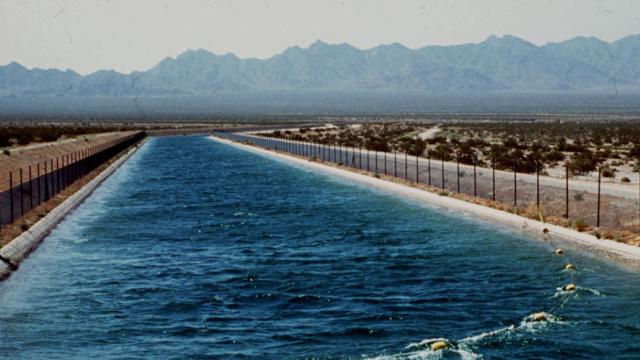This week, for the first time in decades, the Colorado River flowed to its natural end in the Gulf of California. But it was the opposite of a natural event. The artificially engineered “pulse flow” that pushed the waters all the way to the Gulf required an unprecedented collaboration between the US and Mexico, wading into a complex body of laws around a basic question: to whom does a river belong?
Thanks to thirsty cities and thirstier farmland, the Colorado River is siphoned dry as it flows from the Rockies to the Pacific — every drop, in fact, carefully allocated by law. The delta where river meets sea has been a dry, cracked expanse for decades. It was once fertile wetlands, enriched by spring floods that carried silt as water flowed toward the sea.
On March 23, the last in a long line of dams along the Colorado temporarily opened its gates, letting out a pulse flow to replicate these spring floods and restore the delta. The water wasn’t expected to flow all the way to the sea, but the fact “that it has, is a wonderful bonus,” wrote a environmentalist who advocated for the pulse flow. In fact, the plan has long been advocated by environmental groups, who along with the American and Mexican governments, each reallocated one-third of the water for the pulse flow.

Kids frolicking in the normally dry Colorado River bed in Mexico. AP Photo/Gregory Bull
The Law of the River
It may seem strange to talk about the flow of a river in fractions, but restoring the Colorado River Delta really is a matter of careful accounting. The “Law of the River“, as it’s simply known by, governs the allocation of the Colorado’s water. In accordance to these laws, each gallon is carefully parceled out among the six states and two countries whose borders the river has handily ignored. The Law of the River compromises several legislative acts, a Supreme Court case, a treaty, and addenda to the treaty. It lays out everything from the size of dams to the allowable salinity of downstream water. All told, it makes for a novella’s worth of jargon-laden reading.
The Law of the River contains the words that divide the Colorado, but the physical river is divided by a long chain of dams, reservoirs, and aqueducts. The most famous is the Hoover Dam, behind which sits Lake Mead, the largest artificial lake in America. Lake Mead is big enough to hold two years’ worth of the Colorado River’s flow. In total, over a hundred dams line the Colorado River and its tributaries.

Lake Mead. AP Photo/Julie Jacobson
How Mexico’s Water Is Stored Near Las Vegas
In 2002, environmentalists managed to convinced both U.S. and Mexico to sign Minute 319, an addition to the 1944 treaty that divided the Colorado River between the two countries. Minute 319 formalised the plan for the pulse flow pilot project, allocating about 1 per cent of river’s flow to the Colorado River delta over five years.
A third of the water would come from the United States’ usual allotment, a third from Mexico’s, and third from environmental groups buying water rights along the river. Here, we run into one of the stranger end conclusions of allocating a river: water ownership can change hands without the water ever changing places. Another provision of Minute 319 allows Mexico to store some of its water share in the vast expanse of Lake Mead. So when you look out on the lake in Nevada, some of that water could technically belong to Mexico hundreds of kilometres away.
The convoluted ownership surrounding water in the Colorado River is no surprise when you consider it is, as some have succinctly put it, “one of the most controlled, controversial, and litigated rivers in the world.” And that is no surprise when you consider that the very development of the American West was shaped by water laws. Without massive feats of engineering that rerouted water from the Colorado River and elsewhere, there would be no Los Angeles, no farmland in the California’s Central Valley, no hydroelectric power for much of the West.
Dams along the Colorado River became “proof that the fatal dryness of the Great American desert could be conquered.” The desert has been conquered at a price — a price we’re now reconsidering. A tiny part of the Colorado River, long divided drop by drop among humans, has finally been allocated to restore the river’s delta. [Arizona Public Media, National Geographic 1, 2]
Lead picture: An undated historical photo of water flowing from the Colorado River to Los Angeles in an aqueduct. AP Photo/Metropolitan Water District of Southern California, File
